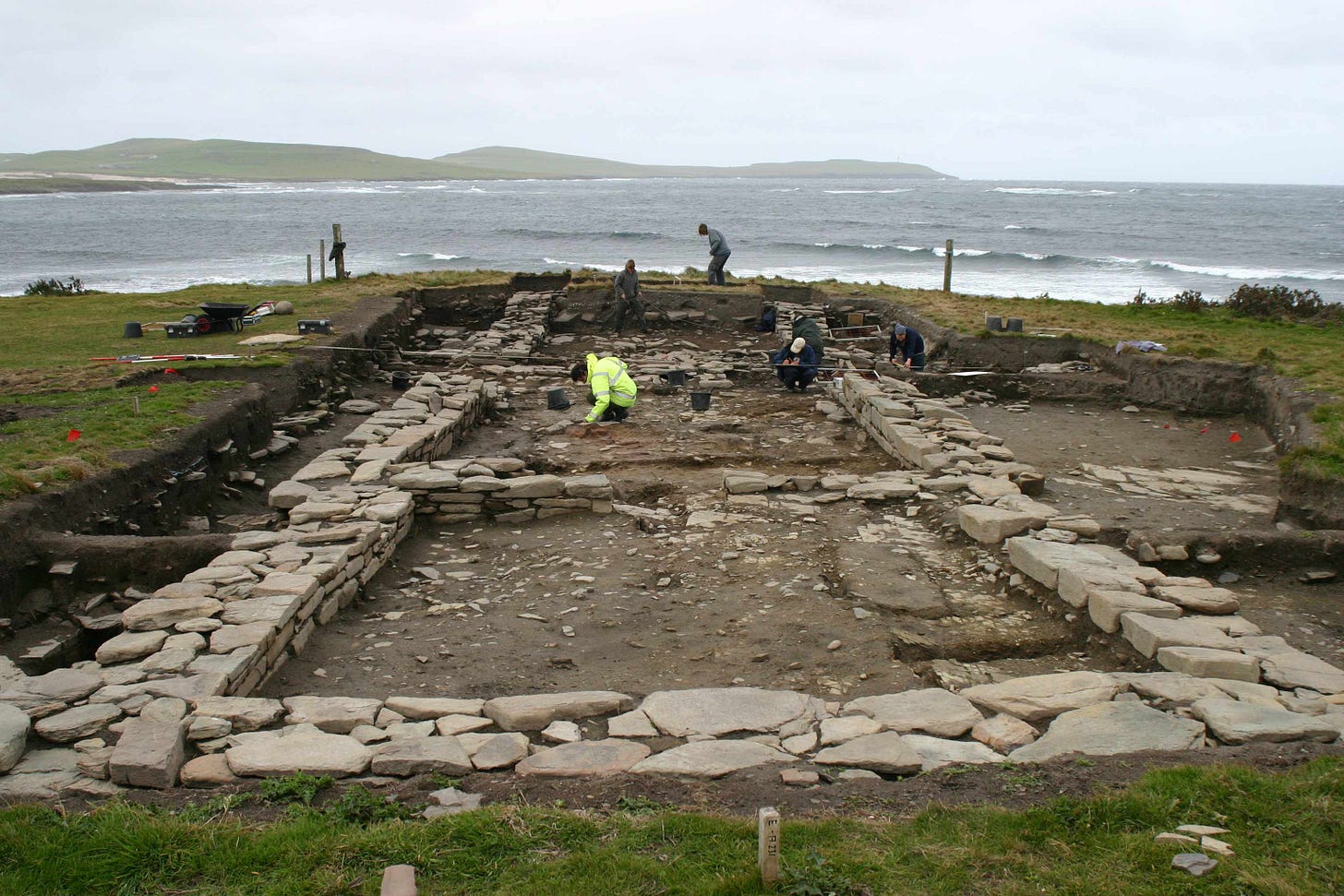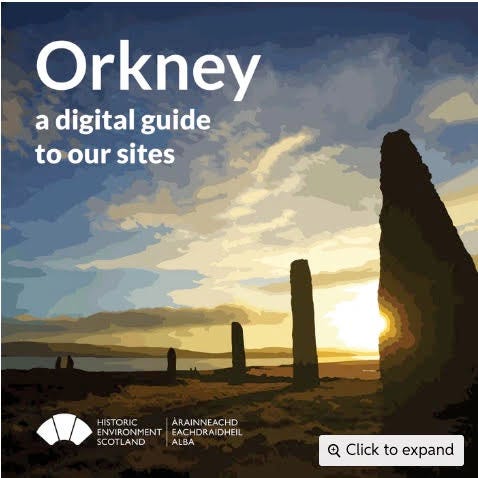I’m talking about Tony Robinson of course, not the character Baldrick from Blackadder.
When I was taught history in school, the last year pre-O levels our teacher was the head master (that’s what they were called in the olden days). Unfortunately his duties of being the headmaster seemed to take precedence over teaching the riveting history of the reunification of Germany to a bunch of fifth years. My exam result for history was abysmal and the subject was very low priority for many years.
That all changed with my move to Orkney quite a few years later, and with the appearance of Time Team on the telly in 1994. I was hooked from the very first programme.
I have to say my tv reception was not very good for some years, with poor picture quality and intermittent reception, until I installed the freesat system and it has been fine since then. It didn’t stop me watching Time Team though.
Time Team brought history into the 20th century, and it was interesting, unlike the dull drone of a bored teacher failing to enthuse a fifteen year old. [Neil in Australia, do you agree?] How times have changed.
Moving to Orkney placed me in the cradle of pre-history and the Neolithic period. My first encounter with a dig was at Quoygrew where a viking settlement was being unearthed, led by James Barrett from York University. I had the opportunity to talk with a real life archaeologist, who was full of enthusiasm for the work which spilled over into the rest of the team. I remember on this first of many visits, sitting in an old canvas tent chatting with a young knowledgeable lady who explained a lot more about the way digs were worked and then they would be written up and the finds analysed. She turned out to be Julie Gibson, Orkney’s County Archaeologist. Yesterday I had the privilege of exchanging emails with the man who has replaced her after her retirement, who was also extremely helpful and full of good advice, for which I am very grateful.
I also attended the various excavations at Berst Ness and Peterkirk, this time the projects being headed up by the Ease Archaeology team, Hazel Moore and Graeme Wilson. Just as with the Quoygrew dig, the team was so enthusiastic and knowledgeable, visitors would come away with so much more information than they would have thought possible. Archaeologists seem to have the knack of bringing to life knowledge of the past that otherwise we would never be able to imagine.
Since then, the Links of Noltland site has opened and closed, the Westray Wife discovered and the cow skull house uncovered, again led by Ease Archaeology. According to the Historic Scotland web site there is likely to be more digging before everything is concluded which includes several years of writing up the analyses of what has been found. The Westray Wife figurine can be seen in the Westray Heritage Centre.
The big question is, how do we convey all this information to the public? In a small community such as Westray there is a limit to the amount of funding available to produce printed guides, which inevitably go out of date long before the paper they are printed on wears out. I think the answer must be get it online.
Ideally I would like to see a digital guide to all the places of interest in Westray, including wildlife, history and archaeology. Web sites go out of date and are expensive to maintain, facebook and social media are ok for short term information but long term is another matter. Historic Environment Scotland [HES] has this problem well in hand. I downloaded a useful guide to Orkney form the HES web site, for the price of £3.00 and it includes most of the islands, Westray in particular. Installed on the smart phone you can read and listen to well informed talks about a few historical and archaeological sites.
For maps, I suggest you go to the Canmore site and select the pastmap link, where you will be able to look at maps dating from the original OS to the latest one plus old historical maps, all superimposed on each other and selectable to view. What a useful piece of softare that is and it can all be downloaded to your phone or iPad and viwed in real time. There are local guide leaflets available free from the shops, but please check with the locals if the paths are clear or not, because over the summer the weeds can get a little out of hand and make passage a bit tricky, or maybe part of the fencing has had a bit of a knock and allowed beasts onto the path, if only temporary. You don’t want to come face to face with an angry cow with its calf, do you. Never take dogs near cattle and always keep the on the lead.
All the Westray shops have travel information and you can ask anyone for help of guidance as to the distance and timings for journeys, especially if you have a ferry to catch back to Mainland Orkney.
I give this information now because at this time of year folks are planning visits to Orkney from all around the globe and it is well to be prepared in advance for what you want and need to go to and see. Despite being a small island most goods are available in the shops, you won’t starve or go hungry and you will be able to have a great and memorable holiday and create memories to take back home with you. There is no need to have a big shop in the mainland supermarkets too, our shops are general merchants and are very well stocked. Fuel is available in Pierowall village but there are no electric vehicle charging points here, to the best of my knowledge.
The simplest way of seeing all that Westray has to offer is to book a tour with Westraak. From April to late July they will also be having evening tours out to the Castle of Burrian to see the puffins.
This post is all about visiting the historical side of the island. Don’t forget the wildlife: birds, marine animals, farms, hills; Westray is Orkney in miniature and bathing is fine on a warm summer’s day, but don’t try to feed the seals by the shoreline.
As usual, what I have written here is in good faith and offers no offence.
Please tick the heart button if you enjoyed this post. Thank you.









All very interesting. Thanks.